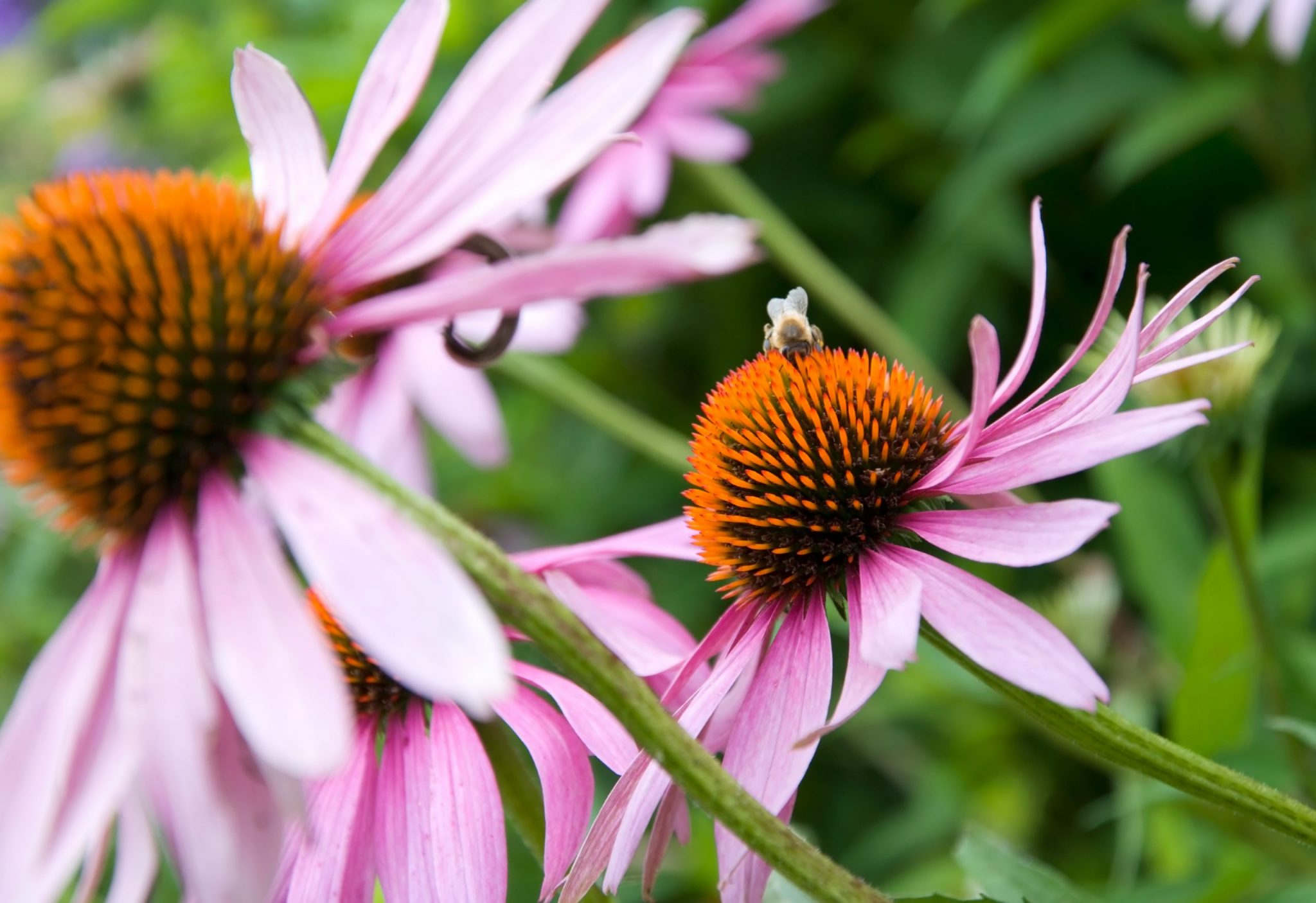That lush green grass that populates your neighbor’s lawn may look lovely to human eyes — but all the bees can see is a desert without anything to feed upon.
Honeybees, mason bees and their kin are essential pollinators for about one-third of the plants that humans eat, so a crisis for the bees is a crisis for humans. Since 2010, the world has largely been aware of the fact that honeybees have been suffering from a variety of problems. Between the collapse of bee colonies that left thousands of beekeepers with empty hives and ongoing problems related to pesticides, climate change and urbanization, the bees need a little help from people to keep going.
If you’re ecologically minded, one of the best things you can do is forgo that plain grass lawn and make a bee lawn instead. It’s perfectly possible to have a lawn that looks lovely and still feeds the bees, and we’re going to share some tips on how to do it.
Ditch the Pesticides, Herbicides and Chemical Fertilizers
Modern gardening supply stores carry all kinds of chemicals that are designed to make your yard and gardens look lovely — but most of those products are damaging to the sensitive neurological system of bees.
Instead of man-made chemicals that can hurt the little pollinators we need, turn to natural remedies. White wine vinegar and apple cider vinegar alike, for example, can be spritzed around your yard instead of herbicides. Their acidic nature can tackle some of the most stubborn invasive weeds, without hurting any honeybees.
Epsom salt is also a great natural substitute for harmful pesticides and damaging chemical fertilizers. It’s a safe, non-toxic way of eliminating snails, slugs and other garden pests while simultaneously providing plenty of magnesium to fertilize your tomatoes and other plants.
Struggling with mosquitoes and other irritating bugs? Try peppermint, lavender or eucalyptus oils instead of turning to sprays with pesticides that might sicken your local honeybees.
Add Local Flowers to Slopes, Trim and Edges
Not ready to give up your grass entirely, just yet? Think your neighbors might be unhappy if you allow the dandelions and clover to take over? It’s okay. There’s still plenty you can do without tearing up your sod and replacing it all.
Adding local flowering plants to sloping areas, as trim around your house and along pathways, creates both visual interest and seasonal beauty, without necessitating a major overhaul of your entire lawn.
The experts recommend adding flowering plants that are native to the area if you want the most success (and the happiest honeybees). In Indiana, you have a huge selection of beautiful flowers that will grow well in sun or shade, including:
- Echinacea purpurea
- Black-eyed Susans
- Columbine
- Bergamot
- Sunflowers
- Blazing stars
You can also add in flowering shrubs and ornamental trees, like the tulip tree, buttonbush, winterberry or black chokeberry for some additional interest or a focal point that will maintain the beauty of your property all year long.
Devote a Small Clover Patch in the Back to the Bees
Is your backyard fenced in? If so, then you don’t have to worry about your neighbors being distressed by the sight of wildflowers growing there instead of grass. Ideally, the bigger the area the better — so turn your whole backyard into a bee garden if you can. If you can’t, try to designate at least a small patch to keep the local bees fat and happy.
How do you do it? Just let the clover grow that’s probably already trying to spread in that area — along with whatever other wildflowers (including dandelions) that might be there. White and purple clover is especially beloved by honeybees, and the nectar produced makes some of the best honey.
There are several advantages to letting your lawn get covered in clover. It doesn’t grow very tall, so it requires no more than two or three mowings in a season, so that’s less work for you. Clover is also highly resistant to drought, so it can give you plenty of ground cover that will prevent erosion even when the weather is too dry for regular grass. It also grows well in both partial shade and full sun, so you don’t have to baby it to get it started.
Let the Little Bees Set up House
Finally, you can also encourage mason bees and other pollinating species to take up residence in your yard by giving them shelter. Just like humans, bees need a safe space to live and breed their young — somewhere that will protect them from predators, bad weather and chemicals alike.
If you’re not ready to adopt a beehive, don’t worry: There are all kinds of mason bee houses available for purchase from supply stores and online shops. Some are small clay pots, while others are made from rolled bamboo and are designed to be mounted high above the ground.
Ideally, you want to make sure that your bee house is placed where it has some protection from the winds and gets enough daily sunlight to keep those little bees warm and happy. With somewhere safe to retreat and a yard full of food, there’s no reason for the bees to desert you.
Remember: You don’t have to make all of these changes at once to help the friendly little bees in your neighborhood thrive. Even one or two small steps in the right direction can help make a difference.




